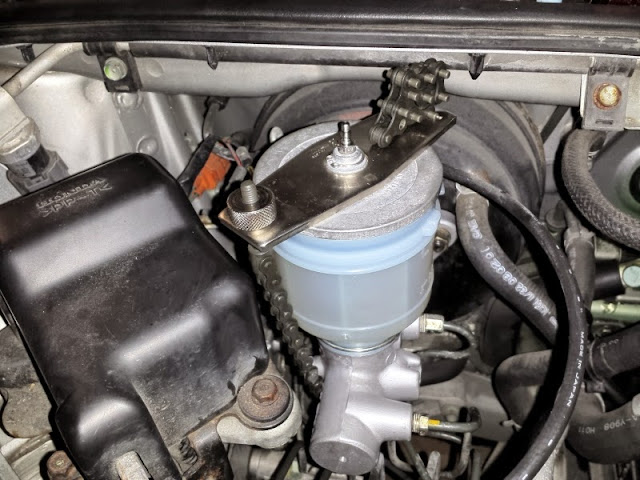Annual Service, Health Check, Brake OH 08
by , 13-08-2014 at 09:47 AM (2107 Views)
It was good idea to replace the master cyl.
There were tiny amount of slow leakage happening at the back of the cyl body making the booster cover rusty but won't be recognised until removing the master cyl.
Testing the pushrod clearance as I have no idea on what was done in the past around the brake area by someone else.
MUST procedure if replacing the master cyl with a new one.
Bench bleed it first before installation otherwise you will be spending hours and wasting lots of brake fluid bleeding the air out of the brake system.
Although brake fluid is at low viscosity, it's much higher than the plain water.
If you have ever disassembled the master cyl, you will notice that the feed ports inside the cyl have really tiny diameter.
Combined with the surface tension, if you push out air through this tiny hole at high/moderate flow rate, just a single small air inside the cyl will become hundreds/thousands of tiny bubbles at the exit of the master cyl fitting and thus, you are going to really struggle bleeding the system.
Another reason why you should bleed the system slowly and don't open the bleeder plug too much once the fluid started flowing at the caliper end.
After bench bled the master cyl, installed it and carried out two rounds of pressure bleeding process.
In between, kept the system under pressure for a while to check for any leakage.
Happy with the result so 2nd round of pressure bleeding and done.
Will adjust the parking brake cable, change the Eng Oil/filter, multiple test driving sessions and finally wash the car.
Should be ready for Thursday.
Kaz







 Email Blog Entry
Email Blog Entry

